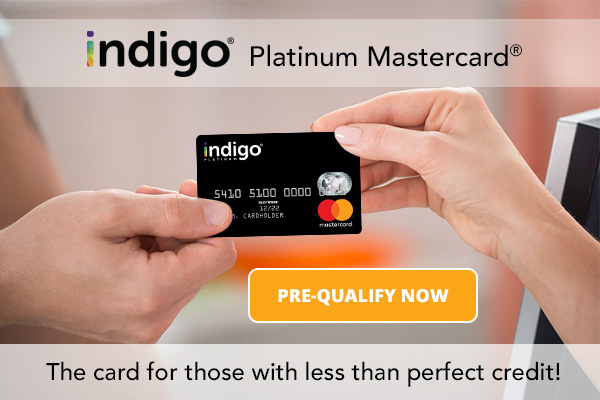

But why is maintaining a good credit score so important? It is important because a poor credit history can affect you negatively. Indigo Platinum MasterCard is made for people to overcome their bad credit history.
#Indigo platinum mastercard how to
Use this card to establish and maintain the healthy credit habits (like timely payments in full, low utilization, and consistently paying down balances) that will improve your credit long-term, and help you qualify for a card that’s better suited for your spending habits in the future.Indigo Platinum Mastercard Activation GuideĪre you worried about your bad credit score? Or you do not know how to use your credit card the correct way? If yes, then switch to Indigo Platinum MasterCard. The goal of a card like Indigo Mastercard is to, over time, improve your credit score enough to qualify for a better credit card. With a credit limit of $300, that means you should keep your charges below $90. Using more than 30% of your available credit can hurt your credit utilization rate - one of the most influential factors in your credit score. The Indigo Mastercard’s low credit limit means you’ll need to be extra careful with your spending to improve your credit score.
#Indigo platinum mastercard full
Only make purchases you can afford to pay off when your statement is due, and pay your bill on time to avoid up to $40 in late fees and a penalty APR up to 29.9%.īuilding a great credit score, whether you’re starting from no credit history or repairing damaged credit, requires a foundation of good credit habits your credit card can help establish - such as timely payments, low credit utilization, and paying off your balances in full each month. How to Use the Indigo Mastercardīecause the Indigo Mastercard doesn’t offer any rewards and your credit limit is just $300, you should use this credit card for the sole purpose of improving your credit score. Consider other cards with no annual fee (and even no annual fee secured credit cards) that may make better long-term options for building a healthier credit profile. If your approval comes with an annual fee, that $59 or $99 ($75 the first year) charge can quickly add up over time.

The amount you’re charged will depend on your creditworthiness when you apply. The annual fee itself is another drawback. If you’re approved for a version of this card with an annual fee, it’ll be automatically applied, which means your starting limit could be as low as $225. The Indigo Mastercard offers an alternative to secured cards for building better credit, but has its own drawbacks.įor one, your credit limit is capped at $300. Many credit cards available to people with bad credit scores are secured credit cards that require a cash deposit as collateral. If you do choose to apply after pre-qualifying, you’ll still be subject to credit approval with a hard credit inquiry. Prequalifying is a great way to gauge your approval odds and the terms of your offer without filling out a full application and undergoing a credit check, which can temporarily hurt your credit score. Prequalification is another benefit of the Indigo Mastercard. You can also choose from multiple card designs for no extra charge. You will get a few benefits, like online account access and reporting to all three credit bureaus (Equifax, Experian, and TransUnion). Like other credit-building card options, it doesn’t offer a lot of perks. The Indigo Mastercard is geared toward people with “ less than perfect credit” or minimal credit histories.


 0 kommentar(er)
0 kommentar(er)
